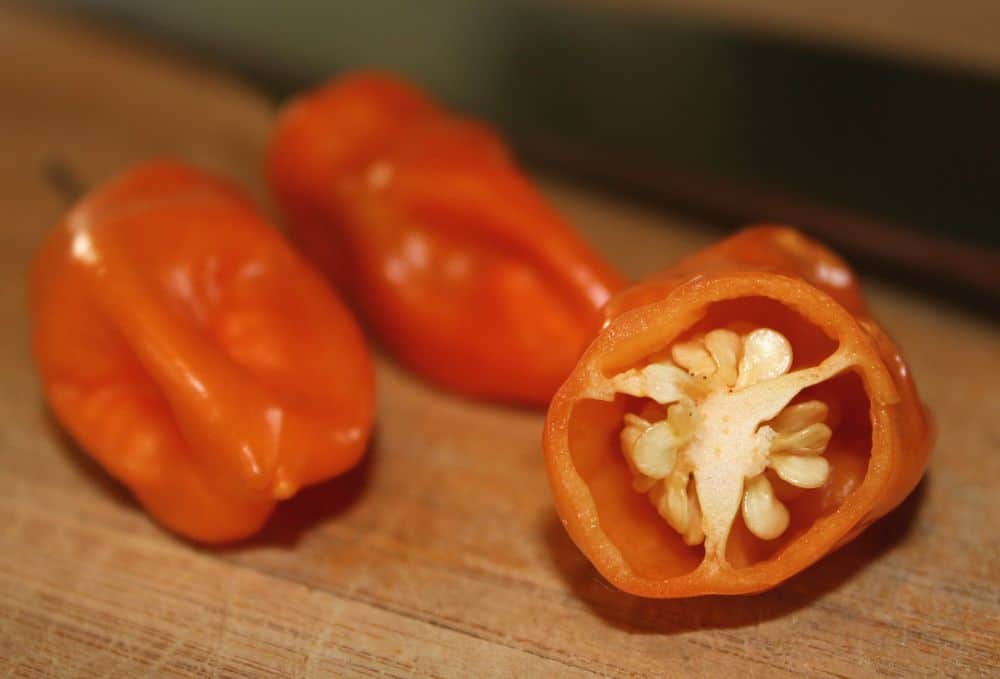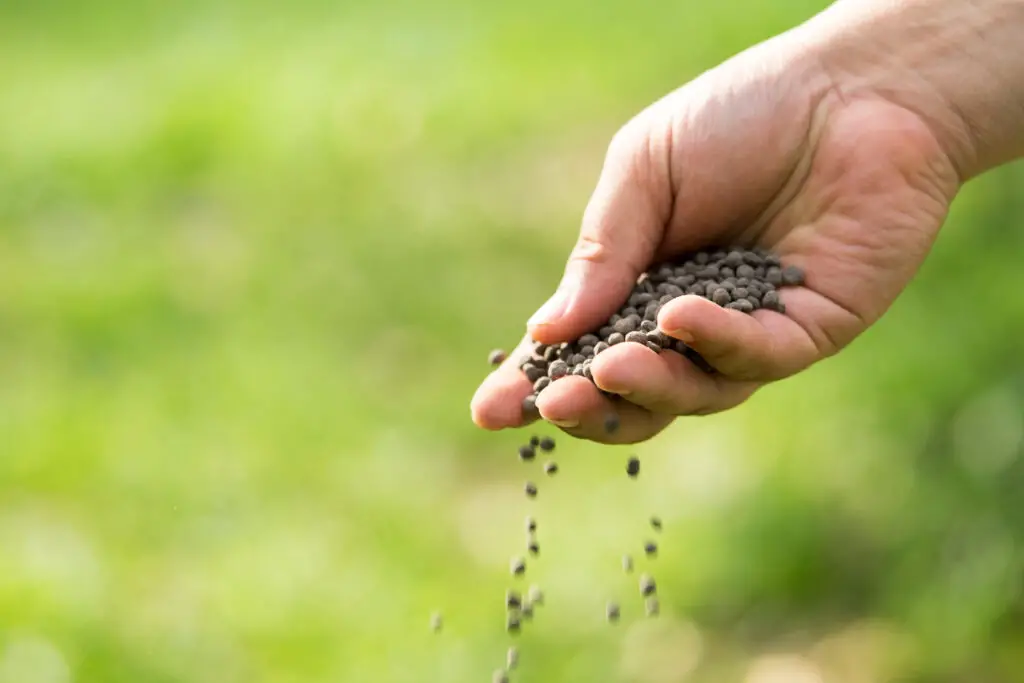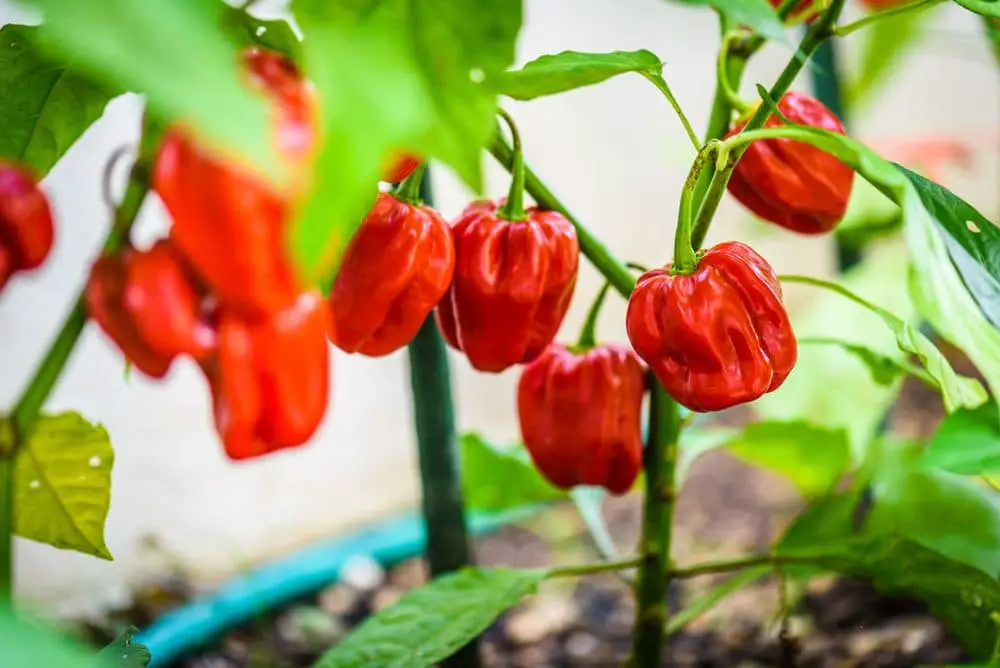If you are among the millions of people who like hot and spicy food, the Caribbean Red Pepper is perfect for you!
The three simplest ways to describe the plant growth of a Caribbean Red Pepper are the Seed Phase, the Growth Phase, and the Reproduction, Flowering, and Fruiting Phase. So beautifully basic! These three stages are described in detail below.
Growth Stages of Caribbean Red Pepper.
Knowing the all-important growth stages will help you take good care of your red-hot peppers. When we know and understand the nutrients they need throughout their lifecycle, we can provide these in the correct manner.
Then you can enjoy the taste of this blazing fiery hot pepper that packs a mouth and eye-watering punch.
It is a powerful and potent plant! Just a few grams of Caribbean Red Pepper will heat up a whole bowl of salsa.
What is good about this delicious hot pepper? You can easily and successfully grow it in a small garden, and it will thrive in all climate zones.
The following guide will give you more information.
Most pepper plants follow the same growth stages and plant life cycle. It requires different nutrients throughout the process, and the amount of sunlight they should take is also not the same.
The 3 Simplest Ways to Describe the Plant Growth Of A Caribbean Red Pepper:
1. The Seed Phase
2. The Growth Phase
3. The Reproduction, Flowering, and Fruiting Phase

Stage I. The Seed Phase
The Caribbean Red Pepper seed is the beginning of this plant’s life cycle. Start with quality seeds and start planting them into the trays or directly into the soil.
A compost and manure added to the soil before planting is highly recommended.
It’s important to plan carefully and plant the Caribbean Red pepper seeds where they will have room to germinate and grow. They should be sown sparsely as the seed is very fine, soft, smooth in texture, and white to brown in color.
Let the seeds grow first in the seed box. It has many small containers in which you can plant the seeds and germinate.
First, place some soil inside the seed box and sow one seed per container. Cover with a light sprinkling of seed starter mix and firm down.
Or you can buy good quality Caribbean Red Pepper seeds from a good source or supermarkets. Either way, from the seeds of Caribbean red pepper fruit. The fruit has many seeds and could have approximately up to forty.
The best way to get those high-quality seeds for planting is to make the fruit over-ripe. It will naturally turn red and will produce quality seeds.
When the seed is in a good place where the conditions are met, the germination phase begins.
For a strong start, the three basic conditions are light, water, and heat. Too much for this stage should be avoided because they are still vulnerable.
How Long Does It Take for Germination?
Germination usually takes between 3 – 7 days. Always keep the soil moist during this period of germination but not wet as this may cause rotting.
The tiny roots grow in their search for water and nutrients.
Stage 2. The Growth Phase
This growth stage is when the Caribbean Red Pepper starts to germinate. The seeds now produce some roots and small green leafy leaves. Eventually, you will see some small leaves.
The two leaves which are known as seed leaves or cotyledons appear first. They are false leaves.
After 5 days or more, the true leaves begin to emerge, forming a canopy. Protection while it grows to its optimum potential.
Caribbean Red Pepper seeds when carefully sown may have abundant seedlings. These seedlings need extra care as their stem is very soft and very easy to break.
You should protect them from the strong winds and the animals. Animals would enjoy eating these leaves – so be vigilant for predators.
The Caribbean Red Pepper plants continue to grow substantially. During this period, they collect energy from the sun, carbon dioxide from the air, and water from the earth.
If the plant is well provided with those three ingredients during this stage, your new plant forms the healthiest roots, leaves, and stems.
Early Morning Watering
Early morning watering of your plant ensures that its roots are hydrated before the heat of the daytime begins. The soil must be watered regularly to avoid the leaves getting wet and so as to prevent possible diseases.
When To Fertilize Your Caribbean Red Pepper?
At this stage of growth, it’s the right time to fertilize. Nitrogen is needed to produce chlorophyll for the newly emerging leaves.
Fertilizer is most essential at their peak plant growth cycle. Nitrogen could also be found in healthy soils. So, add some compost with organic matter to the soil.

You could start to transplant red pepper seedlings when they have more leaves and are 6 inches in height. This will help healthier growth.
Stage 3. The Reproduction, Flowering, and Fruiting Phase
This final stage happens when a mature plant is ready to reproduce. This means that the Caribbean Red Pepper started producing more green leaves and stronger stems and branches.
Even more food and energy are needed now to complete the plant growth stage.
The sunlight, water, and other nutrients such as phosphorus and potassium are essential, at this point in growth, to make the plants even healthier. It’s essential you give them more care than in the previous stages.
You need to apply enough fertilizer and continuous watering as it will produce more flowers and more fruits.
Some pepper plants take days to develop buds while others take months. These little buds later bloom into flowers. It’s exciting and rewarding when you finally observe, during this period, small white smooth flowers appearing.
Some pests and worms may attack your pepper plants during this period.
Be prepared for that!
In no time at all your Caribbean Red Pepper begins to produce fruits now after it blooms. The fruit is naturally green in color and turns red when ripe and ready for harvest.
The fruit ranges from about 2-8 inches long. It has a smooth texture and its tips are pointed. Some Caribbean Red Peppers bear fruit at the age of 3-4 months old.
What is a Caribbean Red Pepper?
A Caribbean Red Pepper is twice as hot as Habanero Pepper. It has 350,000 to 400,000 Scoville units – a very highly spicy version of the Habanero Pepper.
The hottest Cayenne Pepper reaches only 70,000 units on this heat-measuring scale.
Take extra caution when handling the fruits of this firecracker – the Caribbean Pepper . Wearing rubber gloves and a mask is a must to avoid its heat.
. Wearing rubber gloves and a mask is a must to avoid its heat.
This red pepper plant grows as small bushes with upright stems. It features vivid green, ovular leaves with pointed tips and sprouts two to six five-petaled flowers per stem.
Typically, it blooms in white, yellow, pale green, or purple hues.
The fruit of the Caribbean Red pepper plant grows about 1 to 2 inches long. It has wrinkly, bright red skin and a lantern – or bell-like – shape.
This indigenous hot pepper of the Caribbean contains some of the hottest and most pungently aromatic peppers found in the world.
Most of the other hot peppers belong to the species Capsicum Annuum. Many of the region’s indigenous landraces (locally bred and isolated species) belong to Capsicum Chinense Jacq.
Final Thoughts on the Growth Stages of Caribbean Red Pepper.
The Caribbean Red Pepper plant stages are fascinating to witness, from seed to a sprawling plant full of burning red hot peppers.
Plant some and see for yourself – the rewards are well worth the small amount of effort it takes to grow them.
Plus, if you don’t eat them, they’ll make nice gifts for those friends and family of yours that like it hot!
Happy gardening!
Read More:
How to Grow Bird’s Eye Chili – If You Like It Hot!
Ghost Pepper Plant (All You Need to Know!) 
Habanero Plant – 10 Easy Tips to Grow Better Habañero Peppers 

